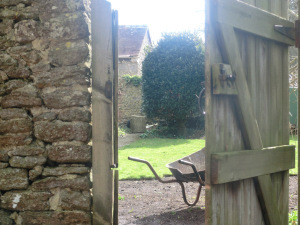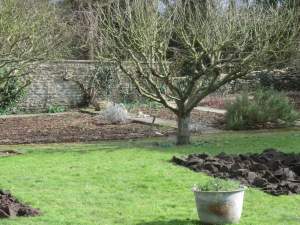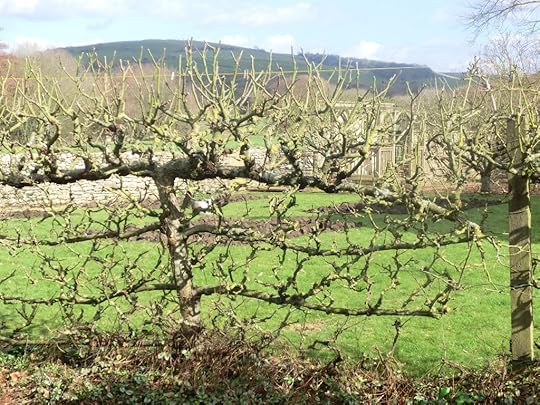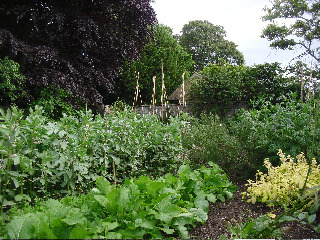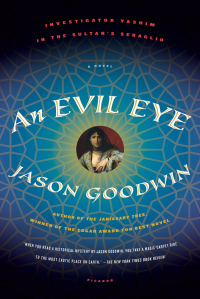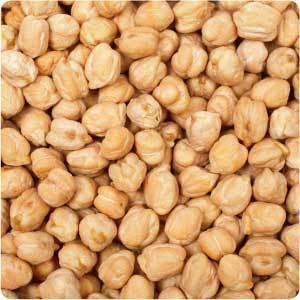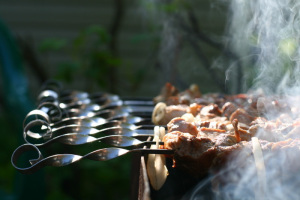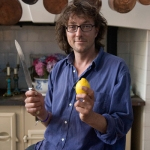Jason Goodwin's Blog: Talking Turkey, page 9
March 9, 2012
Tulipomania – (almost) too beautiful for words
A reader's suggestion for putting tulips in the garden reminds me of this passage in my history of the Ottomans, Lords of the Horizons:
The tulip was the emblem of the Ottoman royal house, worked into textiles and inlay, and celebrated in poetry: the romantic tulip of Central Asia, that is, a lyre-shaped flower with pointed petals. For a brief period at the end of the seventeenth century the tulip's sway in the Ottoman garden was challenged by melons and cucumbers; but under Ahmet III in the 1720s it came back into favour with a frenzy which recalled, in its less sordid aspects, the tulipomania of seventeenth-century Holland.
The Dutch mania had been a speculator's bubble. In Turkey tulipomania came to symbolise the hedonism of the court. Sultan Ahmet III had so many children that with all the births, circumcisions and daughters' weddings a permanent holiday atmosphere reigned in the Seraglio. 'Let us laugh, let us play, let us enjoy the delights of the world to the full,' wrote the court poet Nedim, a particular favourite of Sultan Ahmet's. Grizzled old kapudan pashas stooped tenderly over the bulbs with little trowels; the head gardener laid his executioner's tools aside, and dazzling were the nightly displays in the palace in the fleeting growing season. The French ambassador described such an evening at the house of Grand Vizier Damad Ibrahim Pasha in 1726:
When the tulips are in flower, and the Grand Vizier wishes to show them to the sultan, care is taken to fill the gaps where the tulips have come up blind, by flowers taken from other gardens and placed in bottles. Beside every fourth flower is stood a candle, level with the bloom, and along the alleys are hung cages filled with all kinds of birds. The trellises are all decorated with an enormous quantity of flowers of every sort, placed in bottles and lit by an infinite number of glass lamps of different colours. These lamps are also hung on the green branches of shrubs which are specially transplanted for the fete from neighbouring woods and placed behind the trellises. The effect of all these varied colours, and of the lights which are reflected by countless mirrors, is said to be magnificent. The illuminations, and the noisy consort of Turkish musical instruments which accompanies them, continue nightly so long as the tulips remain in flower, during which time the Grand Seigneur and his whole suite are lodged and fed at the expense of the Grand Vizier…
For ten years the whole of Constantinople gave itself over to illusions of fairyland. Giant turtles bearing flickering candelabra paddled through the Seraglio grounds. 'Sometimes the court appears floating on the waters of the Bosphorus or the Golden Horn, in elegant caiques, covered with silken tents; sometimes it moves forward in a long cavalcade towards one or another of the pleasure palaces… These processions are made especially attractive by the beauty of the horses and the luxury of their caparisons; they progress, with golden or silver harnesses and plumed foreheads, their coverings resplendent with precious stones.'
At the back of it, though, lay policy desperate and inspired: it was all the handiwork of a single Grand Vizier, Damad Ibrahim Pasha, who feverishly worked the silken threads…
From Lords of the Horizons: A History of the Ottoman Empire








March 6, 2012
Getting the plot right
There are plenty of reasons why writers find it hard to get on with their books. In The Enemies of Promise, the critic Cyril Connolly famously defined one of them as The Pram in the Hall. He did not mention The Seed Catalogue, but then Connolly was not, I imagine, much of a vegetable gardener.
So here I am, ostensibly working on the plot of the fifth Yashim novel, while actually planning another plot altogether.
This our third year at Little Berwick, a hill away from the sea, and we are going for the full cornucopia. In the walled garden, where we inherited two vegetable plots, we have dug four more out of the lawn. Frost and rain, a little of both, have prepared the soil over the winter months and this weekend, trusting in the warmth of Spring, I planted four rows of broad – or fava – beans and two of an onion called Red Baron. Potatoes won't do in the new plots for a few years yet – there's too much eelworm under the old grass; and anyway, potato haulms aren't beautiful. These new beds are going to be as good to look at as to eat. That's how the Ottomans did their gardens, too, mixing vegetables with flowers.
So what's going in? Peas, of course, and shallots; leeks, cabbages and kale; yellow climbing beans – not standard runners, which set too hard and grow suddenly huge and stringy; squashes and courgettes, including the yellow sort; a dozen different sort of salad leaf, including rocket and radicchio, popping up at timely intervals between the rows; and last year's artichokes, ready to soar this year, with their sculptural grey spikes and purple-greenish heads. I'd like a row or two of colourful chard, and spinach. Turnips for eating raw when they're small, with a dab of cold butter; carrots for salads, and carrots for winter; beetroot – I've been sent a packet of white beetroot seeds by a lady who owns the late Patrick Leigh-Fermor's bed, so I will sow those.
If I can get some glass up in time (Yashim permitting) I will dive into tomatoes and peppers and try an aubergine or two, and great pots of basil. Coriander, too – the Ottomans used much more in their cooking than the modern Turks.
Last year was superb for fruit – the old pears and apples against the walls did beautifully – but my Italian-sourced seeds were pretty poor, and the courgettes were miserable. This year I'm following with the genius loci and sticking to traditional, domestic seeds – but all ideas for Ottoman-inspired plants and vegetables would be very welcome!








March 1, 2012
Quiz – the winner is …
Thanks to all of you who entered the quiz competition – and to anyone who found the answers staring them in the face, and thought better of trying, my apologies! I hadn't foreseen that the responses might be posted automatically for all to see, so next time I'll do it by email, secretly.
'Orchid' wins – she's from New York, and she answered the questions via a link on Goodreads. Well done to her, and I hope you enjoy the books!
The answers in order are – Martinique, Marta and dolma.








February 24, 2012
Quiz competition
The US edition of An Evil Eye, the latest Yashim adventure, comes out in paperback on February 28th. To mark the event, the first person to get the right answers to three questions wins two signed copies of An Evil Eye – one for them and one, maybe, for a friend! Everyone's welcome to have a go, wherever they are in the world.
The questions are:
1. The Valide Sultan, the sultan's mother and Yashim's old friend, was born and raised a long way from the Topkapi Palace in Istanbul. Question is – where?
2. Stanislaw Palewski, the Polish ambassador, is lucky enough to have an adoring – and resourceful – housekeeper. What is her name?
3. And finally, Yashim cooks plenty of meals in the course of his investigations. Dishes like stuffed mussels, or tiny eggplants filled with spiced lamb, or vine leaves wrapped around aromatic rice, can be eaten as snacks, or meze, and have a generic name which indicates that they are stuffed. What are they called?
Just type your answers in the reply box below, and hit 'Post Comment'. The winner will be chosen on March 1st.
Good luck!








December 23, 2011
Yashim's Kitchen III
I don't know if you're having turkey this year? Or a goose? We are going for guinea fowl because they are so tasty, with a duck for the crisp skin. I quite like turkey but it makes a greasy stock, and a good stock is what you want for this pilaf.
Mehmet the Conqueror's Grand Vizier used to serve this as a working lunch in divan, the council meeting held on a Friday. Into it he tossed a gold chickpea for some lucky pasha to discover (or break a tooth on): the Ottoman version of putting a sixpence in the Christmas pudding, perhaps.
Ingredients:
Basmati rice
Chickpeas, soaked overnight and boiled for an hour (but tinned chickpeas are pretty handy, too)
An onion
butter, salt, festive stock
Rinse the rice in cold water until the water is clear – this is to remove the starch, which would make the rice too sticky. Leave it to soak while you melt the onions in butter. When they are soft, add the chickpeas.
Drain the rice, stir it into the pan and add enough stock to cover the rice and a little more.
When the stock has all been absorbed, check the rice; it should be a little nutty, but almost edible. If necessary add a little more stock until the rice is almost done.
Now comes the strange pilaf magic: cover the pan with a cloth and a lid. Over a whisper of heat, or none, let the rice steam for fifteen minutes.
Turn the rice out into a dish, helping to fluff it out with a fork.
This rice method sounds like complicated alchemy, but it's simple really – and it works.








December 15, 2011
Yashim's Kitchen II – lamb kebab
Effortless and classic, these kebabs are best gently grilled over a throbbing mass of hot charcoal.
Ingredients
2 lbs boned shoulder of lamb, cut into inch cubes
2 onions
some garlic cloves, crushed
A small handful of cumin seeds
Salt
Pitta bread
Red onion, sliced
Chopped fresh flat-leaf parsley
Lemon wedges
Grate the onions into a colander set on a plate, sprinkle with salt, and leave to sweat for twenty minutes. Press the onions down with a spoon to extract all the juice, chuck the pulp and mix the juice with the garlic and the cumin seeds, roasted and crushed.
Stir in the lamb and marinade at room temperature for a few hours, then thread the meat onto skewers.
Sprinkle the pitta breads with water, and grill them on both sides for a minute.
Grill the meat for 2-3 minutes on each side.
Pop meat, onion and parsley into the bread, with a squeeze of lemon, and eat with both hands.








December 13, 2011
Next Post
With some trepidation I prepared this rather spectacular dish in front of sixty people at a literary festival one Summer. It was a complete triumph, as you can see from my expression in the photo.
Yashim cooks this, too, in An Evil Eye.
Ingredients:
A large fresh mackerel, not gutted
Olive oil
For the stuffing: A few shallots, scoop of pine nuts, scoop of chopped blanched almonds, scoop of chopped walnuts, a handful of currants soaked in warm water, a few dried apricots finely chopped, and some herbs and spices – generous pinches of cinnamon, allspice, ground cloves, kirmiz biber or chilli powder, sugar and dill and parsley, finely chopped.
Cooking is easy – it's getting there that's the challenge. You have to make a small incision beneath the gills, and then draw out the guts, and chuck them away. Lay the mackerel on a board and beat it with a rolling pin, or an empty bottle, making sure you've snapped the backbone. Massage the skin gently, to loosen it from the flesh and finally – this is the bit that makes your audience, if you have one, groan out loud – squeeze the whole thing out through the incision below the gills!
It is not easy. Go gently, trying not to tear the skin, as if you were squeezing a tube of toothpaste. You are left with an empty skin, still attached to the head. Rinse it out, making sure to remove any little bones, and set it aside.
Now make the stuffing: sweat the chopped shallots in oil, add all the nuts, and let them colour. Add all the other ingredients except the herbs, and stir them around.
Pick out as much of the flesh as you can from the bones, and mix it into the stuffing, with herbs, a squeeze of lemon, and salt and pepper to taste.
Cook it through for another couple of minutes. Let it cool a bit, and stuff that mackerel! Use a teaspoon, and gradually fill the skin, squeezing the stuffing right down to the end. It looks like a mackerel again.
You can roll the fish in flour and fry it, or better still brush with oil and set it under the grill, hot, until the skin begins to blister.
Finally, with a very sharp knife, slice the mackerel thickly, lay it on a plate like a fish, and serve with lemon wedges.








Stuffed mackerel
With some trepidation I prepared this ...
With some trepidation I prepared this rather spectacular dish in front of sixty people at a literary festival one Summer. It was a complete triumph, as you can see from my expression in the photo.
Yashim cooks this, too, in An Evil Eye.
Ingredients:
A large fresh mackerel, not gutted
Olive oil
For the stuffing: A few shallots, scoop of pine nuts, scoop of chopped blanched almonds, scoop of chopped walnuts, a handful of currants soaked in warm water, a few dried apricots finely chopped, and some herbs and spices – generous pinches of cinnamon, allspice, ground cloves, kirmiz biber or chilli powder, sugar and dill and parsley, finely chopped.
Cooking is easy – it's getting there that's the challenge. You have to make a small incision beneath the gills, and then draw out the guts, and chuck them away. Lay the mackerel on a board and beat it with a rolling pin, or an empty bottle, making sure you've snapped the backbone. Massage the skin gently, to loosen it from the flesh and finally – this is the bit that makes your audience, if you have one, groan out loud – squeeze the whole thing out through the incision below the gills!
It is not easy. Go gently, trying not to tear the skin, as if you were squeezing a tube of toothpaste. You are left with an empty skin, still attached to the head. Rinse it out, making sure to remove any little bones, and set it aside.
Now make the stuffing: sweat the chopped shallots in oil, add all the nuts, and let them colour. Add all the other ingredients except the herbs, and stir them around.
Pick out as much of the flesh as you can from the bones, and mix it into the stuffing, with herbs, a squeeze of lemon, and salt and pepper to taste.
Cook it through for another couple of minutes. Let it cool a bit, and stuff that mackerel! Use a teaspoon, and gradually fill the skin, squeezing the stuffing right down to the end. It looks like a mackerel again.
You can roll the fish in flour and fry it, or better still brush with oil and set it under the grill, hot, until the skin begins to blister.
Finally, with a very sharp knife, slice the mackerel thickly, lay it on a plate like a fish, and serve with lemon wedges.








Yashim's kitchen I
Yashim, the protagonist of four novels in the award winning detective series set in 1830s Istanbul, is more than a sleuth – he's also a great cook. In his apartment in Balat he prepares some of the dishes for which the Turks, with their long Ottoman heritage, are justly famous: not for nothing is Turkish cookery described as one of the three great cuisines of the world, along with French and Chinese.
Yashim loves cooking, which gives him time and space to think, and readers seem to love his recipes just as much. Like a turban glimpsed on the street, a draft of sweet coffee or the slender shadow of a minaret, Yashim's dishes help to recreate the flavours of Istanbul – its abundance of seasonal vegetables, fresh fish drawn from the waters of the Bosphorus and the Sea of Marmora, the ubiquitous soups and grilled lamb, the yoghurt and the spices that scent the air of the Egyptian Bazaar.
Each of the novels, beginning with The Janissary Tree, has figured several recipes perfected in the sultan's kitchens – although the fish stew which appears in An Evil Eye, the latest in the series, is really a Greek fisherman's feast, and the recipe for that – kakavia – can be found here on my blog.
Over the next few days I'll be posting some new recipes for readers to try – maybe for some people they'll suggest a break from turkey leftovers (I mean the bird, not the country)!
The quantities are not precise. As I wrote in Lords of the Horizons: A History of the Ottoman Empire: 'The French emperor Napoleon III and his empress, Eugenie, spent a week in Istanbul as the Sultan's guests in 1862. The Empress was so taken with a concoction of aubergine puree and lamb that she asked for permission to send her own chef to the kitchens to study the recipe. The request was graciously granted by their host, and the chef duly set off with his scales and notebook. The Sultan's cook slung him out, roaring, 'An imperial chef cooks with his feelings, his eyes, and his nose!'
Be warned.








October 15, 2011
getting out a bit more
Back from a glorious morning at the Guildford Book Festival – glorious, not least, for dragging me out into the dawn in Dorset, and the mist curving over the hils as the sun rose red. After a frustrating week of plotting – a film treatment, of all things – it was good fun to arrive at the Electric Theatre and find myself amongst friends old and new, readers, writers – and Tim O'Kelly, who runs the One Tree Bookshop in Petersfield. Tim's shop is what all book shops should be, and the Guardian have just said so here:
http://www.guardian.co.uk/books/2011/oct/01/day-in-life-independent-bookshop
The event was a 'Reader's Day', which meant a medley of small and large events with various authors including Elizabeth Speller, Mark Mills, Suzannah Dunn, S.J. Parris (aka Stephania Merritt) and Imogen Robertson, for whom I feel an avuncular affection, having given her a well-deserved good review in the New York Times for her first book, Instruments of Darkness. A great deal of laughter, some very interesting book chat, and – as ever – three cheers for the librarians of Surrey, who turned out as volunteers to make sure we got to the sandwiches.
Coming home I listened to Katie Fforde enthusing about Georgette Heyer; she was, apparently, extremely rude about all her millions of fans. Perhaps she should have gone to the Electric?
 [image error]
[image error]






Talking Turkey
I I'm drawn to Istanbul the way one is drawn to Dickens's London, or Chandler's LA: it is a riotous, burgeoning, creative city with stories round every corner. An atmosphere I try to catch in my books.
I'm an intermittent blogger but feel free to browse: there are essays on the city, on crime writing, on books, food, Polish freedom fighters, and history. ...more
- Jason Goodwin's profile
- 411 followers




